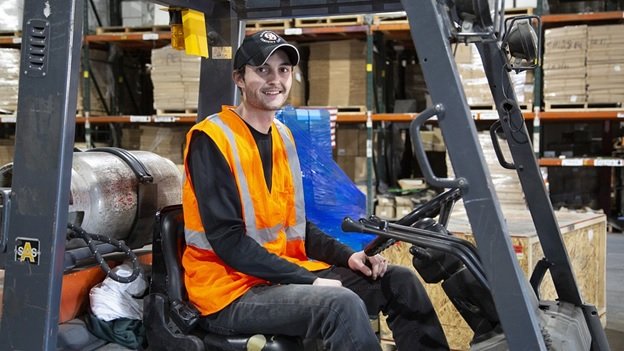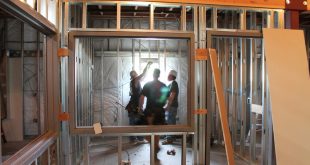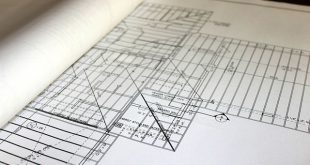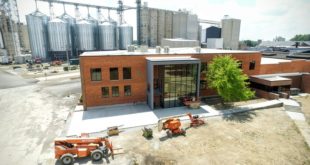The variety of tools used on construction sites is the reason that it has become much safer and quicker to lift and move heavy objects from one place to another. Almost every industry depends heavily on advanced machinery and construction strategies to exist. The crane is considered one of the oldest tools or machines used in the heavy lifting history. It is believed that it was invented by ancient Egyptians and Greek builders. It’s quite evident how advanced their construction skills were, as a lot of their monuments are still standing tall today after thousands of years. From using mules to manually operated cranes, passing through treadmill-operated cranes, and now finally to hydraulic cranes.
Today, heavy lifting equipment can actually be used to build towers over 800 meters tall. The industrial revolution is in line for credit, as it was the era where construction and heavy lifting equipment had progressed immensely. Materials became more durable and stronger as wood was replaced by steel and iron. Manually-operated tools transformed into steam-powered ones that could handle much higher pressure. As heavy lifting progressed, fewer casualties due to dangerous work environment occurred. While working in construction was and still is a relatively high-risk work environment, it is constantly progressing to becoming a safer and more efficient industry. It doesn’t hurt to read some of the best guides available while you’re at it to get yourself familiar with the machinery. These guides will give you a comprehensive insight into how these tools work so that you have a better understanding. While there are many tools that are used in a variety of heavy lifting jobs, we’ll be giving you a brief list of the best and most popular tools.

1. Cranes
Cranes use a mechanical system incorporating pulleys and cables that produces energy strong enough to lift heavy objects. It’s almost impossible to find a construction site that doesn’t use a crane or two. Cranes are quite useful as they provide movement in 3 different directions; upward, downward, and horizontally (right and left). We’ve mentioned that cranes before were operated manually using animals or by steam engines. Most cranes used nowadays operate using hydraulics, which is a technology that involves utilizing the physical properties of fluids. A powerful combustion engine combined with an electric motor can give cranes a significant boost when it comes to lifting heavy objects. Cranes have a chamber with a seat and controls that allows a human to operate it with complete ease and without exerting a lot of physical effort. Those who operate cranes, though, must be very alert and experienced as a mistake can sometimes cost more than damage to property.
Cranes are generally categorized into three types: gantry, jib, and davit. The first one, gantry, depends on one single beam usually made of rolled steel and supported by a duo-leg structure. To actually load and unload heavy weights, a hoist is attached to the end of the beam. Gantry cranes are usually fixed and most commonly used in loading docks, but some types are portable and can move from one place to another.
A jib crane operates on the same principle, except for the beam- instead of being attached to a leg structure, it’s attached to a fixed post. Unlike the gantry, a jib crane isn’t as flexible and rotates in a circular motion only.
The davit crane is also connected to a fixed post, but it uses an angled beam with an electric hoist or winch that can move downward and upward at the tip of the beam. They’re considered quite flexible in transporting heavy loads from one place to another as long as it’s within the crane’s range.
2. Forklift
The forklift is a vehicle of industrial standards that are used to transfer cargo. It operates using a simple mechanism yet it’s one of the most important tools in warehouses. Modern forklifts use an electric battery to operate, some versions use a traditional combustion engine. The truck frame has all the components of the forklift attached to it.
Wheels, forks, the carriage, the hydraulic system, the mast, counterweight, and the lifting chain are the most important elements connected to the frame. The counterweight is simply made of cast iron and is in the back of the forklift to balance and prevent it from tipping when it’s carrying a heavy load. A forklift is able to lift loads that could weigh thousands of pounds with complete ease and safety. The hydraulic cylinder allows the entry of gas and seals it inside, then it keeps sucking in gas to increase pressure. This pressure pushes a piston head that results in raising the forklift higher until it reaches equilibrium and then stops at the height the operator designates.

3. Lifts
Lifts are quite common to see in many different environments, from warehouses to elevators. Lifts are around us everywhere. There are three main types of lifts: auto, personnel, and material handling.
Auto or car lifts are found in garages and mechanic shops. They can be used to raise anything from motorcycles to trucks. Car lifts handle different weights and there is more than one type; the most common types are scissor lifts, car ramps, and 4-post lifts.
Personnel lifts are commonly used in elevators to navigate through a building vertically. They are also used on a smaller scale in electric lift chairs to help the elderly or those with a disability to stand or get up from chairs; sling lifts use the same mechanism as well to navigate out of beds and baths.
Material handling lifts are used in more industrial settings like storage facilities and construction sites. Made of sturdy materials like steel and aluminum to handle big weights securely while navigating through limited space.
Heavy lifting may include dozens of other important tools that can depend on the exact job being carried out. These three tools are the most commonly used ones in many different industries. Thanks to technology, the safety, and security of these tools are at a remarkable level with the utmost care of material quality and standards.
 World inside pictures Collect and share the best ideas that make our life easier
World inside pictures Collect and share the best ideas that make our life easier








